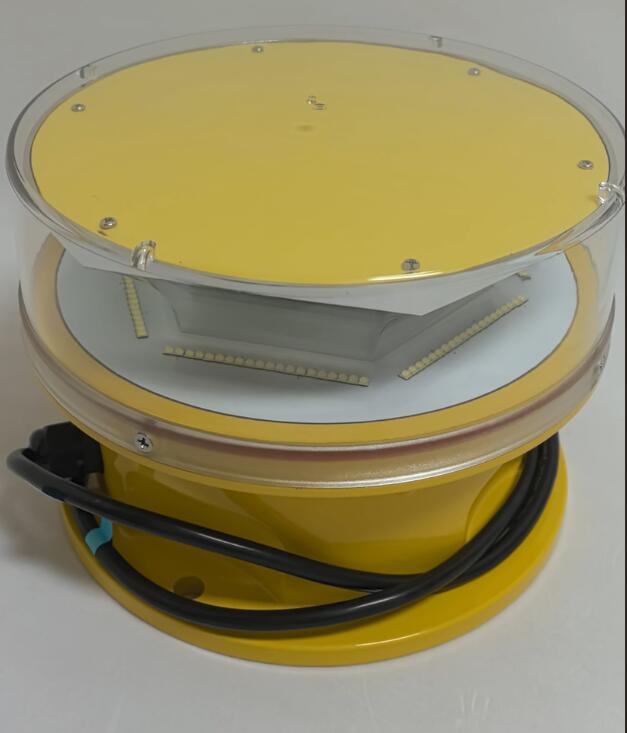The Vital Role of Obstruction Lights in Airport Safety and Operations
Airports are complex environments where safety is paramount. Among the many critical components ensuring smooth operations, obstruction lights airport systems play a crucial role. These lights are designed to mark hazards, such as tall structures, towers, and other obstacles, ensuring that pilots can navigate safely, especially during low visibility conditions. This article explores the importance, types, regulations, and technological advancements of obstruction lights airport systems.
Why Obstruction Lights Are Essential for Airports
Obstruction lights serve as a visual warning system for pilots, helping them identify potential hazards in and around airports. Key reasons for their importance include:
Enhanced Aviation Safety – Tall structures near runways or flight paths pose significant risks. Obstruction lights airport installations ensure these obstacles are visible, reducing collision risks.

Regulatory Compliance – Aviation authorities, such as the FAA (Federal Aviation Administration) and ICAO (International Civil Aviation Organization), mandate the use of obstruction lights on certain structures to meet safety standards.
Low-Visibility Navigation – During fog, rain, or nighttime operations, these lights provide critical visual cues for pilots.
Protection of Infrastructure – By marking obstacles, airports prevent accidental damage to communication towers, wind turbines, and other tall structures.
Types of Obstruction Lights Used in Airports
Different types of obstruction lights airport systems are used depending on the height and location of the obstacle:
Low-Intensity Obstruction Lights (L-810) – Used for structures below 45 meters (148 feet). These steady-burning red lights are common on smaller buildings near airports.
| obstruction lights airport |
Medium-Intensity Obstruction Lights (L-864/L-865) – Suitable for structures between 45 and 150 meters (148–492 feet). They can be red (L-864) or white (L-865) and may flash to increase visibility.
High-Intensity Obstruction Lights (L-856/L-857) – Required for structures exceeding 150 meters (492 feet). These bright white flashing lights are visible from long distances and are often used on skyscrapers or telecommunication towers near airports.
Dual Lighting Systems – Some obstacles use a combination of red lights during the day and high-intensity white strobes at night for optimal visibility.
Regulations Governing Obstruction Lights at Airports
To maintain uniformity and safety, aviation authorities enforce strict guidelines on obstruction lights airport installations:
FAA (Federal Aviation Administration) Standards – The FAA’s Advisory Circular (AC) 70/7460-1L outlines requirements for lighting and marking obstructions.
ICAO (International Civil Aviation Organization) Guidelines – ICAO Annex 14 specifies lighting standards for obstacles near aerodromes.
Local Aviation Authority Rules – Many countries have additional regulations tailored to their airspace and infrastructure needs.
Compliance with these regulations ensures that obstruction lights function correctly and minimize risks to aircraft.
Technological Advancements in Obstruction Lighting
Modern obstruction lights airport systems incorporate advanced technologies to improve efficiency and reliability:
LED Lighting – LEDs are now widely used due to their energy efficiency, long lifespan, and high visibility.
Solar-Powered Systems – Remote or off-grid obstacles benefit from solar-powered obstruction lights, reducing maintenance and operational costs.
Smart Monitoring Systems – Some modern lights include remote diagnostics and automatic failure alerts, ensuring continuous operation.
Aircraft Detection Lighting Systems (ADLS) – These systems activate obstruction lights only when an aircraft is nearby, reducing light pollution and energy consumption.
Challenges and Future Trends
Despite their importance, obstruction lights airport systems face challenges such as:
Light Pollution Concerns – Bright flashing lights can affect nearby communities. Solutions like ADLS help mitigate this issue.
Maintenance Requirements – Regular inspections are necessary to ensure lights remain operational.
Weather Resistance – Obstruction lights must withstand extreme conditions, including storms and high winds.
Future trends may include:
Increased Automation – AI-driven monitoring for predictive maintenance.
Enhanced Durability – More robust materials to extend product lifespans.
Integration with Air Traffic Systems – Synchronizing obstruction lights with other navigational aids for better coordination.
Obstruction lights airport systems are indispensable for aviation safety, ensuring that pilots can identify and avoid hazards in all conditions. With evolving technologies and stricter regulations, these lighting systems continue to improve, enhancing both safety and efficiency in airport operations. As airports expand and urban development encroaches on airspace, the role of obstruction lights will only grow in importance, safeguarding the future of aviation.
